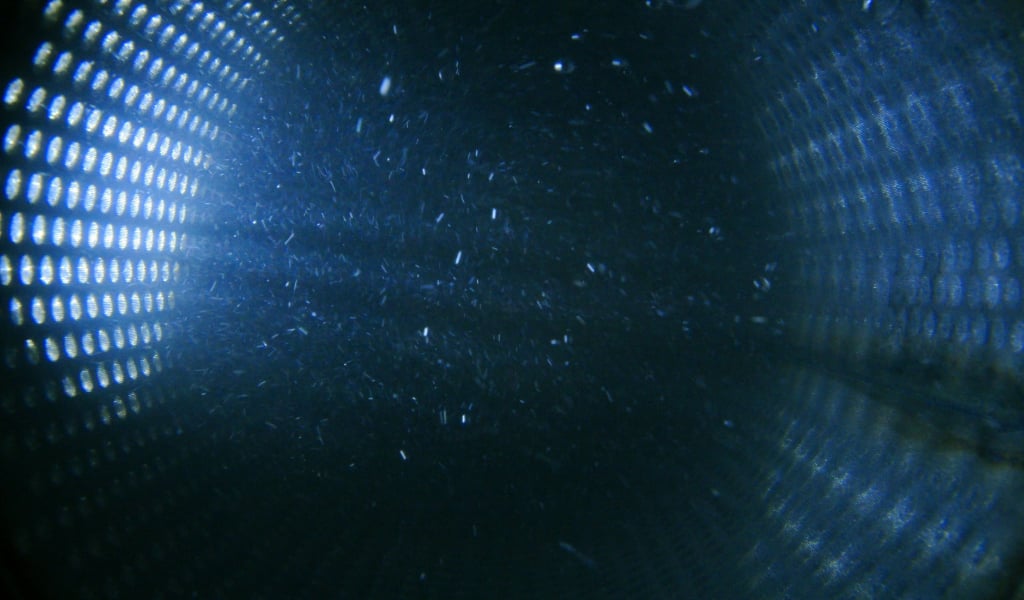Key Maintenance Challenges in Desalination Operations
Desalination operations are critical for providing fresh water in regions facing scarcity, but they come with a unique set of maintenance challenges that can disrupt production and inflate operational costs. From scaling and fouling to corrosion and mechanical wear, these issues arise unexpectedly and require immediate attention. Unfortunately, many facilities struggle to maintain consistent performance due to the complexity and harsh conditions of the desalination environment.
To overcome these hurdles, operators must adopt a proactive and informed approach to maintenance. This includes understanding the root causes of common issues, selecting the right materials and equipment, and implementing strategic upkeep practices. By doing so, facilities can reduce downtime, extend equipment life, and ensure a more reliable water supply.
At W.S. Tyler, we believe in creating cleaner and safer industrial environments through innovative woven wire mesh solutions. With over 150 years of experience, we are committed to helping desalination plants optimize their operations and minimize maintenance-related disruptions.
In this article, we’ll explore the most prevalent maintenance challenges in desalination operations, examine how equipment design and material selection influence upkeep, and outline proactive strategies to mitigate these issues. By the end, you’ll have a clearer understanding of how to enhance your maintenance practices and improve overall system performance.
Top Maintenance Issues in Desalination
Scaling is one of the most persistent issues in desalination systems, particularly in reverse osmosis and thermal distillation units. It occurs when dissolved salts, such as calcium carbonate or sulfate compounds, precipitate and form hard deposits on equipment surfaces. These deposits reduce flow efficiency, increase energy consumption, and can lead to early equipment failure if not addressed promptly.
Fouling refers to the accumulation of biological material, suspended solids, and other contaminants on membrane surfaces and internal components. This buildup can severely restrict water flow and compromise filtration performance. In seawater desalination, biofouling is especially problematic due to the presence of microorganisms and organic matter, often requiring frequent cleaning and chemical treatment.
That’s why implementing an effective pretreatment process is crucial, as it helps to mitigate biofouling risks before they impact the core filtration system.
Pre-filtration, even in fine microfiltration applications starting at 5 microns and above, plays a vital role in protecting downstream components. By capturing particles early, it reduces the strain on membranes and minimizes the risk of damage caused by longitudinal particles that can bypass less precise filter media like wedge wires.
Corrosion is a major concern in desalination plants due to the constant exposure to saline water and harsh operating conditions. Metal components, especially those not made from corrosion-resistant alloys, can degrade over time, leading to leaks, structural damage, and expensive replacements.
Preventing corrosion requires careful material selection and regular inspection protocols.
Mechanical wear affects pumps, valves, and other moving parts that are essential to the desalination process. Continuous operation under high pressure and temperature conditions accelerates wear, resulting in reduced performance and increased maintenance frequency.
Many of these issues stem from insufficient pretreatment. Without effective filtration, suspended solids and biological contaminants pass through to critical components, accelerating fouling and increasing the frequency of maintenance interventions. Implementing predictive maintenance and using durable components can help mitigate these effects.
How Equipment Design Affects Upkeep
The design of desalination equipment plays a pivotal role in determining how often and how intense maintenance needs to be. Systems that are not optimized for the harsh conditions of saltwater processing tend to degrade faster, leading to frequent breakdowns and expensive repairs. Factors such as material selection, flow dynamics, and accessibility all contribute to the long-term reliability of the system.
Multi-layer woven wire mesh filter elements with square openings offer a unique advantage by enabling high throughput while maintaining structural stability. This design ensures reliable particle retention, especially in microfiltration, where longitudinal particles can otherwise slip through and damage membranes.
They also can offer high mechanical strength and corrosion resistance, making them ideal for reducing maintenance in saline environments.
Selecting the right materials is essential for minimizing corrosion in desalination systems. For instance, components with PREN values above 40, such as Avesta 254 SMO, offer superior resistance to saltwater corrosion compared to standard steel grades. These high-performance alloys also can withstand exposure to chemicals and chlorine, which are commonly used during pretreatment before water reaches the membranes.
Woven wire mesh filters made from corrosion-resistant alloys further enhance system reliability by reducing buildup and improving filtration efficiency. This ultimately lowers downtime costs and promotes process stability, allowing desalination operations to continue uninterrupted.
Want to learn more about what specs are best with woven wire mesh for your water filtration system? Discover more in our article below:
Additionally, the consistent performance of woven wire mesh contributes to lower desalination costs by reducing energy consumption. Regular cleaning is easier and more effective, which means less power is needed to maintain optimal flow rates and system pressure.
Maintenance efficiency is also influenced by how accessible components are for inspection and replacement. Systems designed with modular components, such as self-cleaning automatic filters, and easy access points allow technicians to perform routine checks and repairs without extensive downtime. This not only speeds up maintenance but also reduces labor costs and improves safety.
While investing in high-quality, well-designed equipment may seem steep upfront, it often results in significant savings over time. Reduced maintenance frequency, fewer emergency repairs, and much longer equipment lifespans all contribute to a lower total cost of ownership. Facilities that prioritize smart design choices from the start are better positioned to maintain consistent output and avoid costly disruptions.
Proactive Maintenance Strategies
Reactive maintenance often leads to unexpected downtime and costly repairs in desalination operations. By contrast, proactive maintenance strategies allow operators to anticipate issues before they escalate. This approach not only improves system reliability but also enhances operational efficiency and safety.
Modern desalination facilities are increasingly adopting predictive maintenance technologies, such as sensors and advanced data analytics, to monitor equipment health in real time. These tools can detect early signs of wear, corrosion, or fouling, enabling timely interventions to prevent major failures. Integrating these systems into daily operations is a key step towards smarter maintenance.
Establishing routine inspection schedules and cleaning protocols is essential for keeping equipment in optimal condition. Using woven wire mesh components that are easy to clean and resistant to buildup can further streamline these efforts.

The use of woven wire mesh with precise square openings also enhances cleaning efficiency. Unlike wedge wire filters, which may allow longitudinal particles to pass through and cause membrane damage, woven mesh ensures consistent retention and easier maintenance, supporting long-term system health.
Effective maintenance also depends on well-trained personnel and thorough documentation. Technicians should be familiar with the specific challenges of desalination systems and equipped with clear guidelines for troubleshooting and repairs. Maintaining detailed records of maintenance activities helps identify recurring issues and refine further strategies.
Smarter Maintenance Starts Here
Desalination operations face a range of maintenance challenges, from scaling and corrosion to design-related inefficiencies. Understanding these issues and how they impact system performance is the first step toward building a more resilient and cost-effective operation.
By investing in well-designed equipment, leveraging predictive monitoring tools, and implementing proactive maintenance strategies, facilities can significantly reduce downtime and extend the lifespan of critical components. Woven wire mesh solutions, in particular, offer durability and ease of maintenance that can streamline upkeep efforts.
At W.S. Tyler, we’re dedicated to helping desalination plants operate cleaner and safer with over 150 years of experience in delivering reliable woven wire mesh solutions. Our products are engineered to withstand the harshest environments while supporting long-term operational success.
Looking to discover more about the importance of filtration design in desalination? Learn more in the article below:
About Dylan Polz
Dylan is a Content Writer with 2 years of experience in marketing and SEO. Passionate about learning and strengthening his writing skills, he is currently expanding his expertise in particle analysis and woven wire mesh technologies. With a strong belief in the power of information to drive positive change, his goal is to develop content that supports cleaner, safer solutions across all industries.



